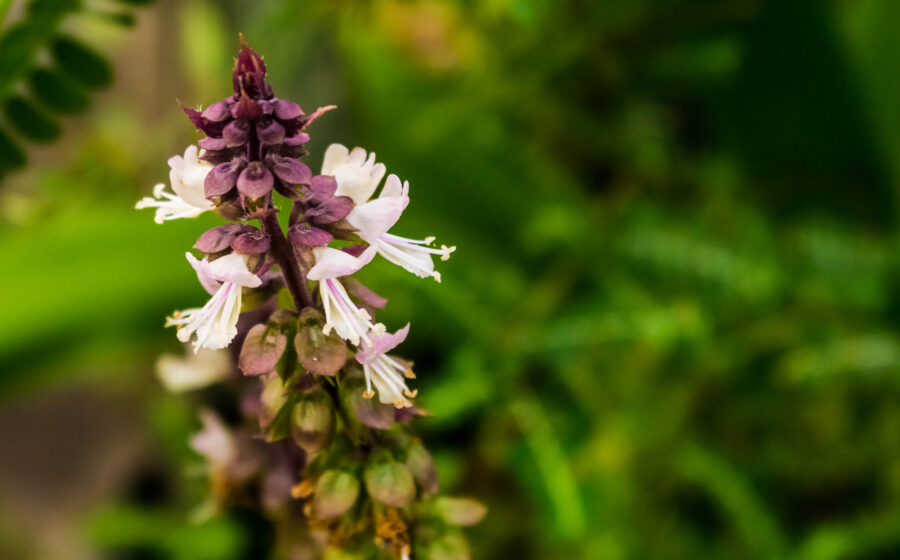[A] fresh breath from an exotic locale, a step into a different culture, a break from the pressures of the modern world, holy basil, or tulsi, is a wonderful ambassador for the healing power of herbals to the wide world of tea drinkers.
This herb has lately enjoyed a surge in popularity among tea and health enthusiasts as a sweet, spicy, and astringent ingredient in nourishing tisanes. But tulsi has been used for thousands of years for its diverse healing properties. In ayurvedic medicine, holy basil is classified as an herb that nourishes a person’s growth to perfect health and promotes long life. Accordingly, it has been referred to by many as ”the elixir of life” or the “the incomparable one.” Studies indicate that it may be helpful for adapting to stress by reducing levels of cortisol, a stress hormone. When we first tasted it at B. Fuller’s Mortar & Pestle, words used to describe its effects included “relaxing” and “euphoric.” It’s easy to see why many have fallen under its spell, drawn in by both its health benefits and its pungent, spicy taste.
Aromatic holy basil is indigenous to the Indian subcontinent, found throughout the lowlands of India, as well as the rest of the Southeast Asian tropics. It is widely cultivated in India around temples and in courtyards for daily use, being especially revered by Vaishnavas, devotees of one of the major branches of Hinduism. Tulsi leaves are considered sacred, an essential part of the worship of Vishnu and his avatars Krishna and Rama, used in morning prayers to insure personal health, spiritual purity, and wellbeing.
There are at least three types: Rama, the cooling, green leaf variety that is the most common; Krishna, bearing dark green to purple leaves; and fragrant Vana, a green leafed forest variety that often grows wild. All varieties of Holy Basil are astringent, pungent, warm and sweet, with notes of peppermint, cloves, licorice, or lemon. Rama has a flavor profile that is more spicy or clove-like, while the Vana variety is more fragrant and sweet, with an anise taste. Krishna tulsi is crisp and peppery.
Often we find that Holy Basil has a specific mouth feel as well; a refreshing tingling or brightness that is reminiscent of the menthol effect of good quality mint. We use Rama holy basil in B. Fuller’s WellBerry blend, where it pairs therapeutically with elderberry, hibiscus, and rose hips to warm the body and combat colds and flu. In terms of flavor, it lends a sweet counterpoint to the tart hibiscus, twining a spicy garland around the slightly bitter, deep structure of the elderberry. With it’s robust, slightly sweet flavor, tulsi is also a strong counterpart to spicy herbs like ginger, turmeric, and cinnamon, and calming when paired with cooling herbs like mint or sage.
Holy basil brings ayurvedic esteem, complex flavor, and soothing nature to any tea line. Tulsi is a charming aid in reducing stress, balancing the body, and an increasingly popular avenue for connecting to the healthful side of tisanes.
—William Sullivan co-owns B. Fuller’s Mortar & Pestle in Seattle. Photo: Thangaraj Kumaravel.
















